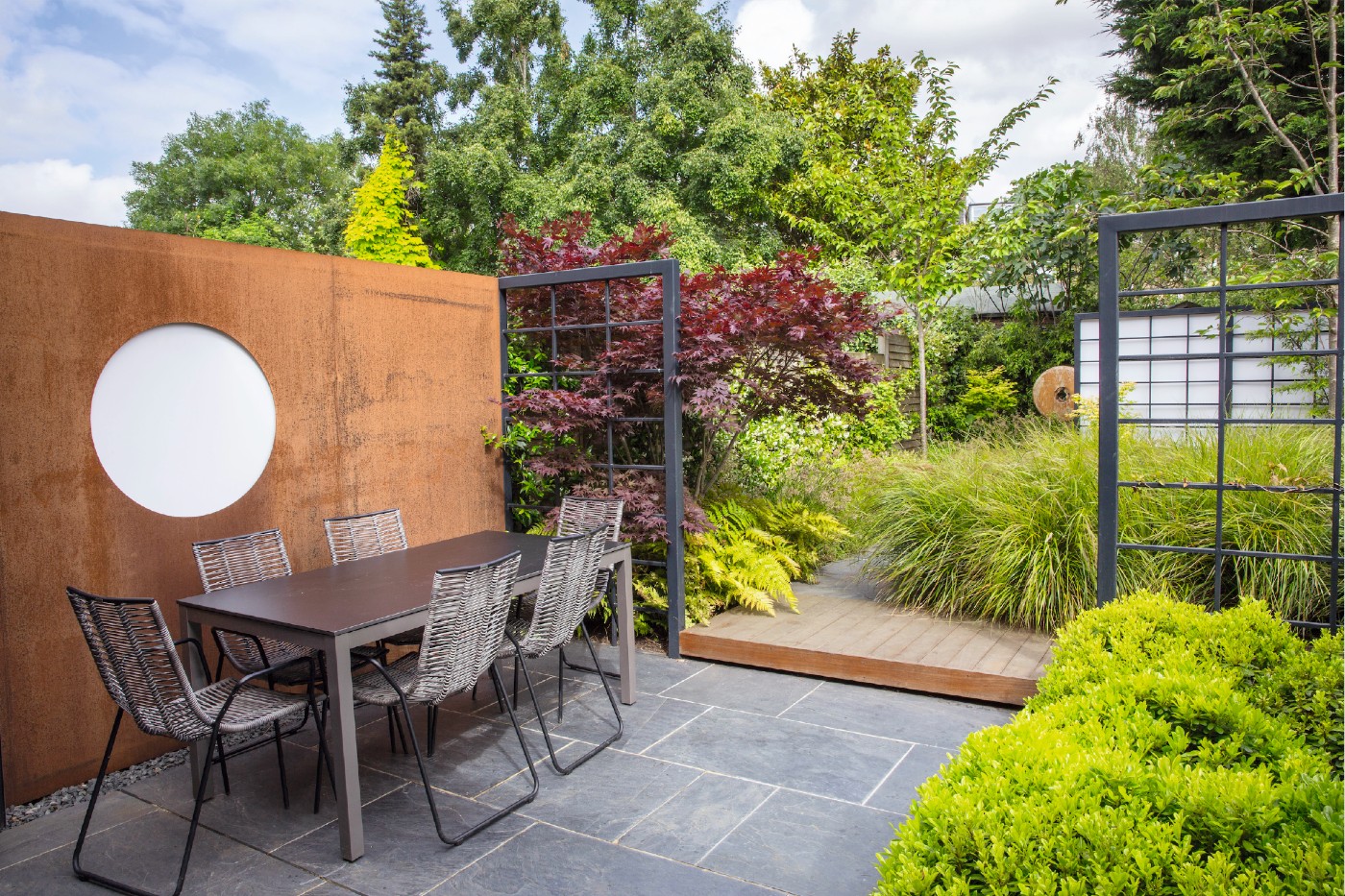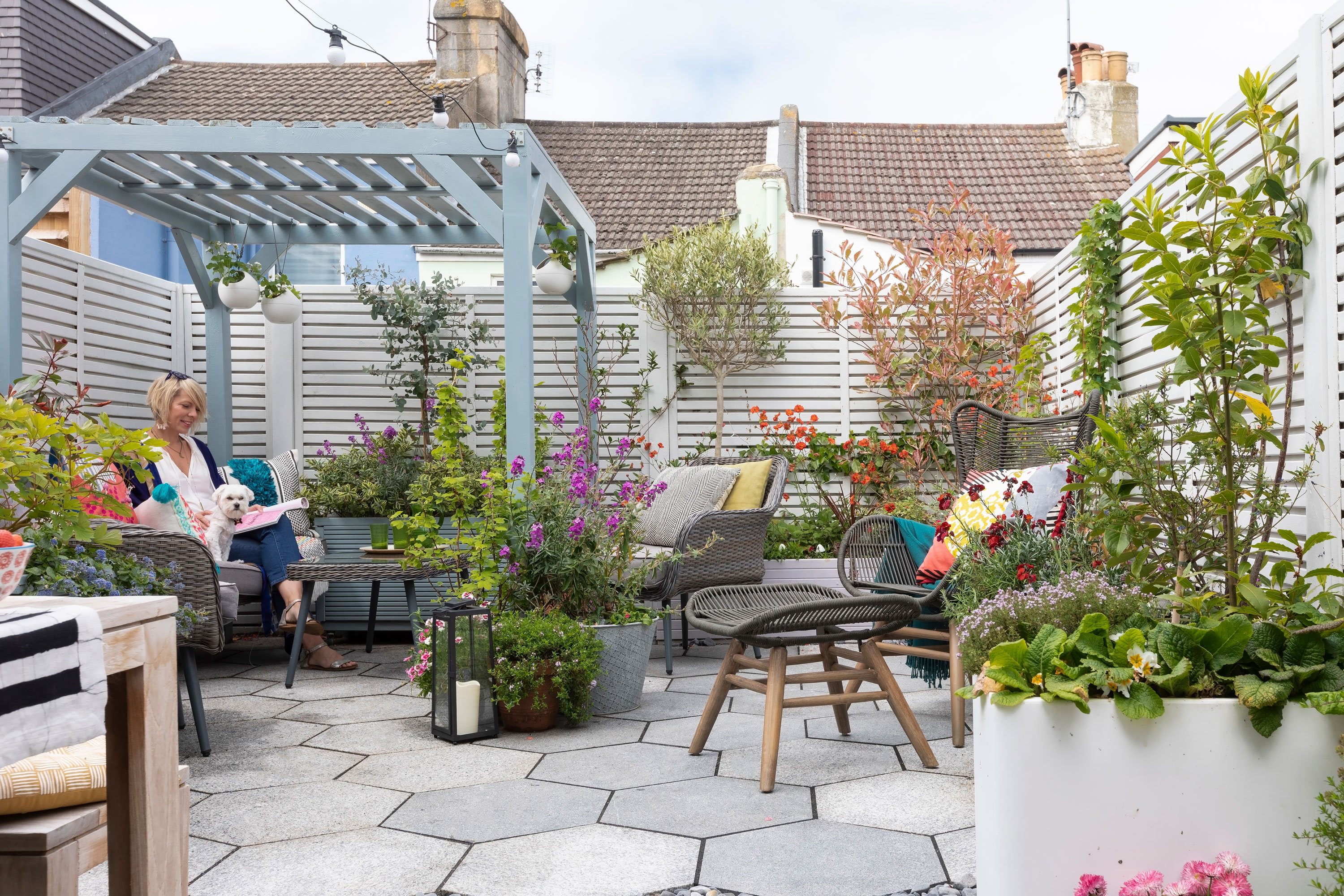South-facing gardens – the best plants and layouts to make your space work
South-facing gardens are very desirable. These are the pros and cons plus, the best planting schemes and layout advice.


A south-facing garden is ultra desirable in the UK. And a back garden with this aspect will receive the most hours of sunlight compared to other garden aspects. A south-facing garden is warmer and can make growing plants easier, too.
In fact, a south-facing garden is so in demand that homes with one are priced higher when they’re sold – by seven per cent on average across the UK – and take less time to sell in most regions, according to Rightmove*.
If you want to make the most of a south-facing space with the best garden design or, you’re thinking of buying a home with one of these, we’ve got everything you need to know below.
- See our step-by-step garden landscaping guide.
Best south-facing garden plants
As a general rule, pick garden plants that need full sun and warm temperatures for a south-facing garden. When you’re planning the planting, bear in mind that you should opt for the plants that love heat the most in the centre of the garden as shade won’t be cast here.
Popular choices you might want to include in your south-facing garden include flowers such as:
- Iris
- Lilies (but avoid these if you’re a cat owner as they’re extremely toxic and can be fatal if ingested),
- Salvia
- Verbascum
- Echinacea
- Sedum
- Chamomile

Think about including architectural plants too. Agave, cordylines and hardy palms could all make attractive inclusions in a modern garden scheme.
When it comes to climbers, you could choose honeysuckle, clematis, wisteria and climbing roses. Shrubs and trees that can thrive in a south-facing garden include lavender, buddleja, and crab apple.
Get small space home decor ideas, celeb inspiration, DIY tips and more, straight to your inbox!
If you want to grow vegetables in south-facing garden, go for tomatoes, peppers, aubergines and squash, which can thrive in the heat. You might like to try including fruit, too, such as raspberries and growing strawberries.
Meanwhile, to flavor your food with ingredients fresh from your south-facing garden, go for rosemary, sage, thyme and oregano which should all grow well here.
- See our herb garden guide too.

Advantages of south-facing gardens
Before we get into the list of major plus points that come with a south-facing garden, let’s take a little look at the details of a south-facing aspect. First of all, it’s important to note that we – and estate agents – are considering the back garden when we talk about a south-facing garden.
If you stood by the outside wall at the rear of your home with your phone’s (or any other) compass in hand, and looked to see which way south is, it would be directly ahead of you.
The result of this south-facing aspect is that there will be lots of sunlight and little shade at the back of your house.
For lovers of outdoor living spaces, maximum sunshine is the first major advantage of a south-facing garden. That means you can enjoy the sun in your garden for more hours of the day than owners of homes with gardens with other orientations. It will likely be warmer earlier in the year than a garden with another aspect, too.
Bear in mind that there is some shade in a south-facing garden. The far boundary of the garden faces north so will be mostly shaded throughout the day. The boundary on the left as you stand at the back of the house looking down the garden will be in shade in the morning, and the boundary on the right will be in shade in the evening.
A south-facing garden can provide good growing conditions for a wide variety of plants as above.
There’s a garden maintenance advantage to having a south-facing garden, too which most garden designers will tell you. Patios and decks will stay cleaner in one of these so you’ll have to spend less time getting rid of moss.
A south-facing garden can also prove an advantage when it comes to your laundry. Clothes will dry quickly out here, so you can avoid the extra cost on your utility bills that comes with putting them into a dryer.
- Considering a North-facing garden in another property? Here's what you nee to know.

- Find the best shade plants for any dappled sun spots.
Disadvantages of south-facing gardens
Some of the advantages of a south-facing garden could turn out to be disadvantages, of course. When temperatures heat up, you could find your coveted south-facing space is actually too hot to sit in. When you’re considering your garden design make sure you plan in shaded garden seating and dining areas so you can retreat to them and still enjoy being outside.
A covered patio space could help and it’s the same for garden plants. Some of them won’t enjoy the growing conditions of a south-facing garden. When it comes to flowers, foliage an. (see more below).
A south-facing garden may require more from you when it comes to watering, too, because the soil is drier.
- See our low maintenance garden ideas to help lighten your work load.

What about gardens that don’t face directly south?
We’ve let you know about the pros and cons of a garden that faces south, but how about those that don’t face that way directly, but instead have a south-east or south-west aspect?
Many people are fans of south-west facing gardens because they get afternoon and evening sun, so you can benefit from time spent outdoors when work is finished for the day.
A garden that faces south east benefits from morning sun, so if you like the idea of breakfast alfresco, one of these could make you happy.
- See all our garden ideas in our edit.

*Rightmove measured average asking prices of 396,158 listings of three and four bedroom houses that came to market between July 2019 and June 2020.

Sarah is a freelance journalist and editor writing for websites, national newspapers, and magazines. She’s spent most of her journalistic career specialising in homes – long enough to see fridges become smart, decorating fashions embrace both minimalism and maximalism, and interiors that blur the indoor/outdoor link become a must-have. She loves testing the latest home appliances, revealing the trends in furnishings and fittings for every room, and investigating the benefits, costs and practicalities of home improvement. It's no big surprise that she likes to put what she writes about into practice, and is a serial house revamper. For Realhomes.com, Sarah reviews coffee machines and vacuum cleaners, taking them through their paces at home to give us an honest, real life review and comparison of every model.